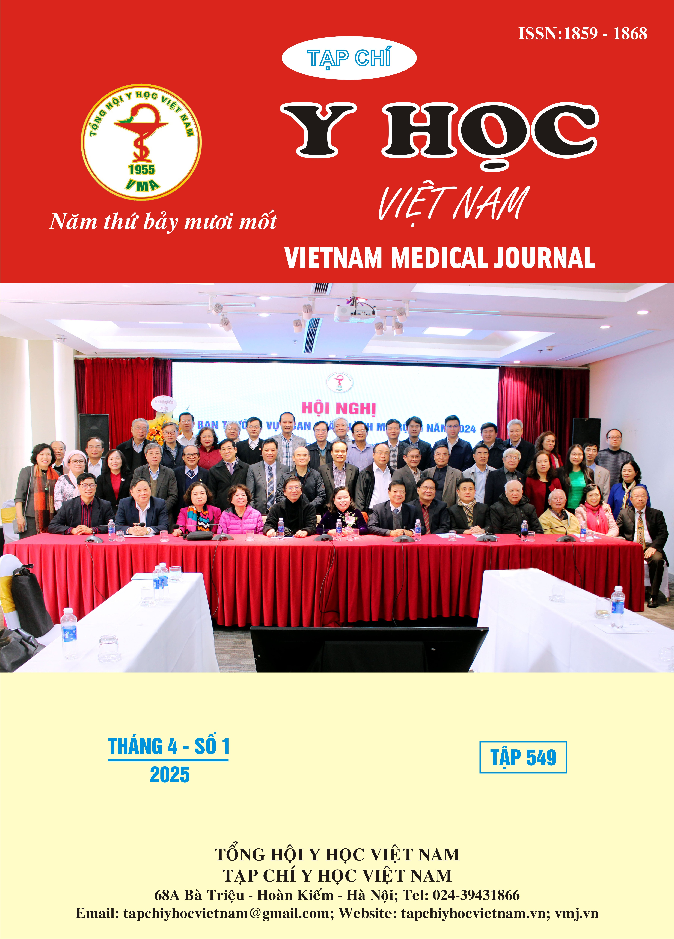THE ROLE OF ABI IN DIAGNOSIS AND TREATMENT OF CHRONIC LOWER EXTREMITY ARTERIAL OCCLUSION DISEASE
Main Article Content
Abstract
Objective: To evaluate the relationship between ABI (Ankle Brachial Index) with clinical symptoms and imaging findings in diagnosing chronic lower extremity arterial occlusion disease (CLEAOD) requiring surgery, and to assess the role of ABI in evaluating surgical treatment outcomes. Methods: A prospective, descriptive case series study on 91 patients diagnosed with CLEAOD at Cho Ray Hospital and University Medical Center HCMC from July 2013 to April 2014. Patients were evaluated for ABI before and after surgery, and correlations between ABI and clinical symptoms and imaging findings were investigated. Results: Mean age was 68±15.07; males accounted for 79.1%. Average ABI before surgery was 0.26±0.23 and after surgery 0.76±0.25 (p<0.001). When ABI<0.4, most patients were in Fontaine stages III and IV (92.3% and 92.5%); when 0.4≤ABI<0.75, most were in Fontaine stage IIB (92%). ABI values decreased with increasing number of arteries affected and severity according to TASC classification. After surgery, ABI increased significantly, with good results when ABI>0.75, fair when ABI>0.4, and failure when ABI<0.4. Conclusion: ABI is valuable in diagnosing, assessing the severity, and monitoring surgical treatment outcomes of CLEAOD. Preoperative ABI≥0.4 is a good prognostic factor for surgical outcomes.
Article Details
Keywords
ABI, chronic lower extremity arterial occlusion, Fontaine, TASX II
References
2. Ko SH, Bandyk DF. Interpretation and significance of ankle-brachial systolic pressure index. Semin Vasc Surg 2013; 26(2-3): 86-94.
3. Makhdoomi K, Mohammadi A, Yekta Z, et al. Correlation between ankle-brachial index and microalbuminuria in type 2 diabetes mellitus. Iran J Kidney Dis 2013; 7(3): 204-209.
4. Lê Đức Tín. Đánh giá kết quả phẫu thuật kết hợp can thiệp nội mạch trong điều trị tắc động mạch mạn tính chi dưới. Luận văn Thạc sĩ Y học, Trường Đại Học Y Dược TPHCM 2012: 64-82.
5. Matsagkas M, Kouvelos G, Arnaoutoglou E, et al. Hybrid Procedures for Patients With Critical Limb Ischemia and Severe Common Femoral Artery Atherosclerosis. Annals of Vascular Surgery 2011; 25(8): 1063-1069.
6. Dan L. Longo, Anthony S. Fauci, Dennis L. Kasper, et al. Harrison's principles of Internal Medicine, 18 ed, USA, The McGraw-Hill Companies, Inc. 2012.
7. Elizabeth Selvin. Prevalence of and Risk Factors for Peripheral Arterial Disease in the United States: Results From the National Health and Nutrition Examination Survey, 1999–2000. Circulation 2004; 110: 738-743.
8. Meijer WT. Peripheral arterial disease in the elderly: The Rotterdam Study. Arterioscler Thromb Vasc Biol 1998; 18(2): 185-192.


